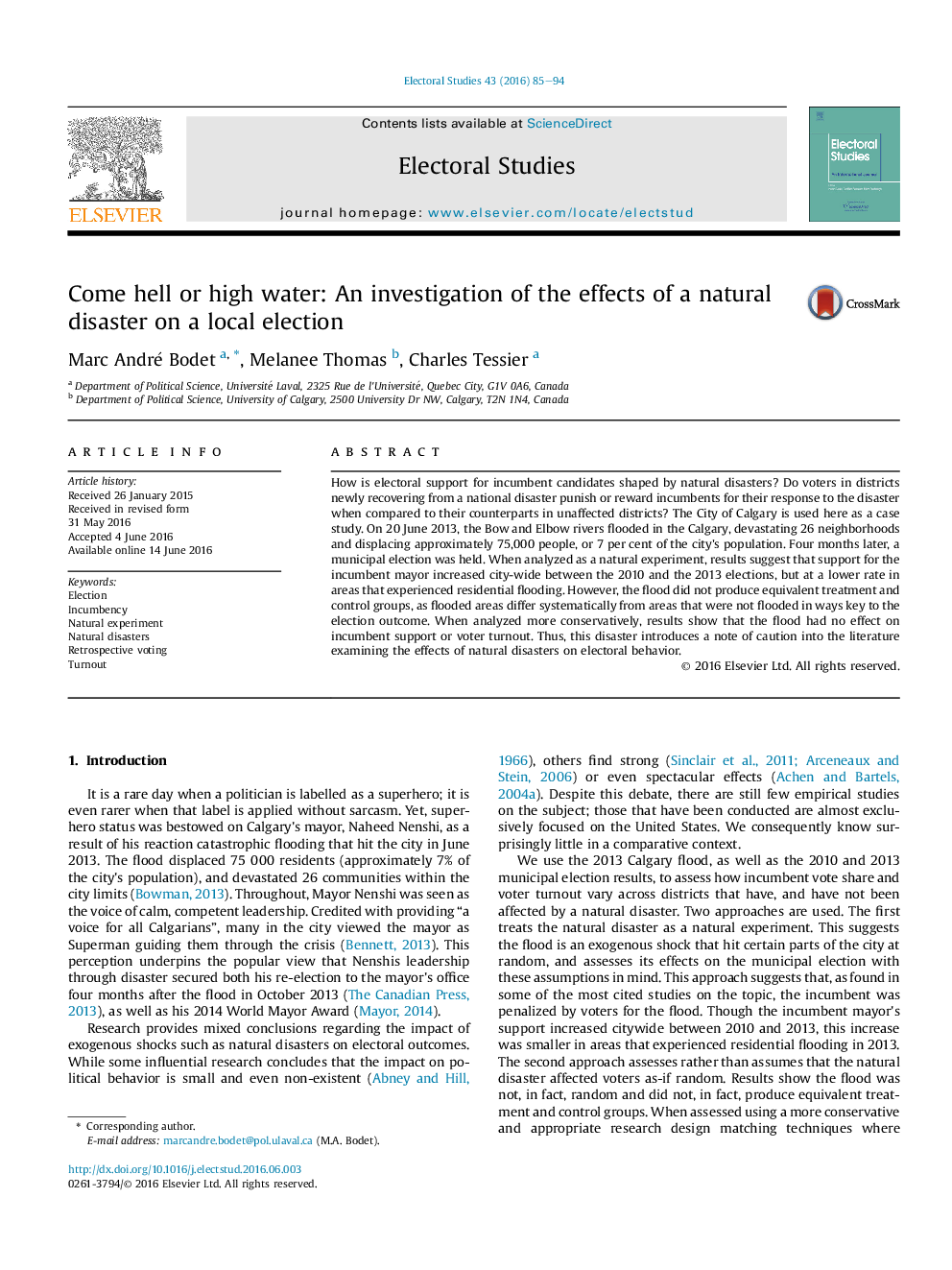| Article ID | Journal | Published Year | Pages | File Type |
|---|---|---|---|---|
| 7463552 | Electoral Studies | 2016 | 10 Pages |
Abstract
How is electoral support for incumbent candidates shaped by natural disasters? Do voters in districts newly recovering from a national disaster punish or reward incumbents for their response to the disaster when compared to their counterparts in unaffected districts? The City of Calgary is used here as a case study. On 20 June 2013, the Bow and Elbow rivers flooded in the Calgary, devastating 26 neighborhoods and displacing approximately 75,000 people, or 7 per cent of the city's population. Four months later, a municipal election was held. When analyzed as a natural experiment, results suggest that support for the incumbent mayor increased city-wide between the 2010 and the 2013 elections, but at a lower rate in areas that experienced residential flooding. However, the flood did not produce equivalent treatment and control groups, as flooded areas differ systematically from areas that were not flooded in ways key to the election outcome. When analyzed more conservatively, results show that the flood had no effect on incumbent support or voter turnout. Thus, this disaster introduces a note of caution into the literature examining the effects of natural disasters on electoral behavior.
Related Topics
Social Sciences and Humanities
Social Sciences
Geography, Planning and Development
Authors
Marc André Bodet, Melanee Thomas, Charles Tessier,
